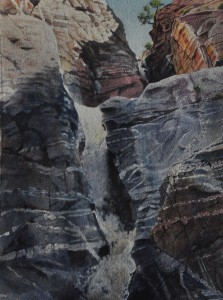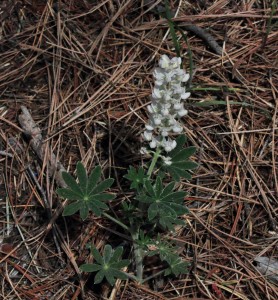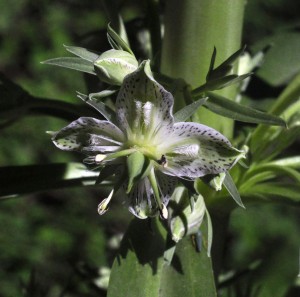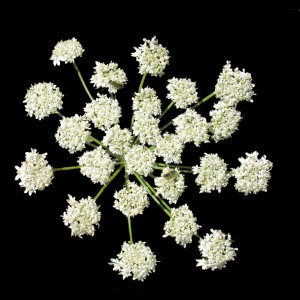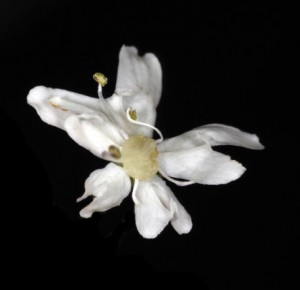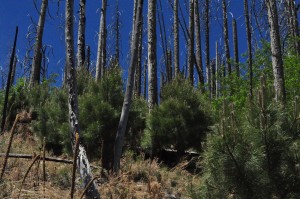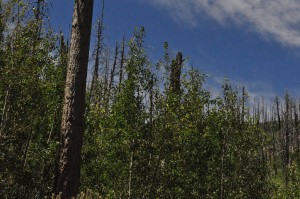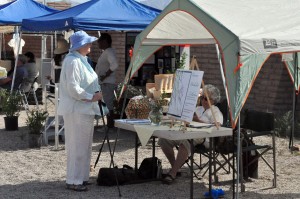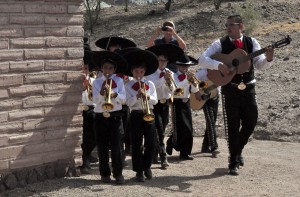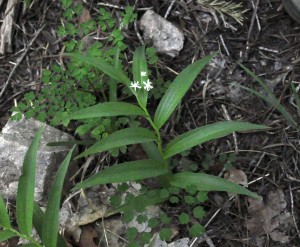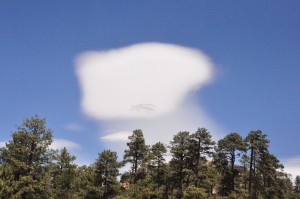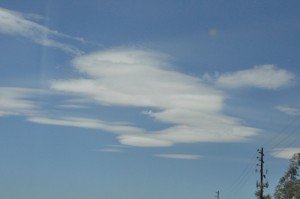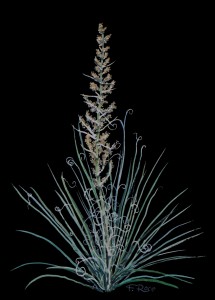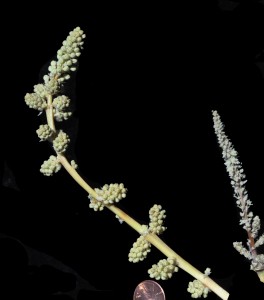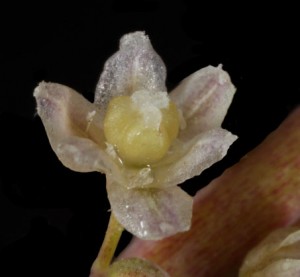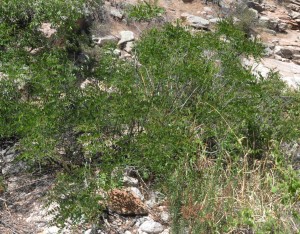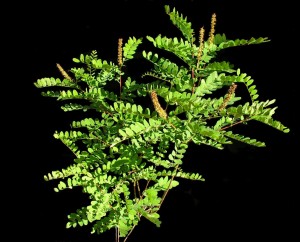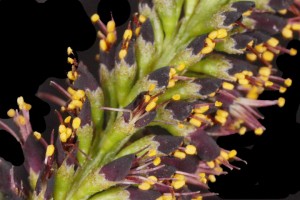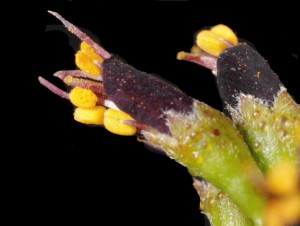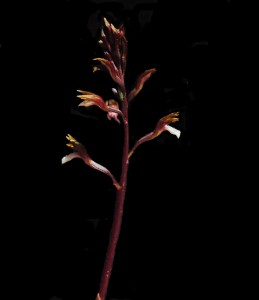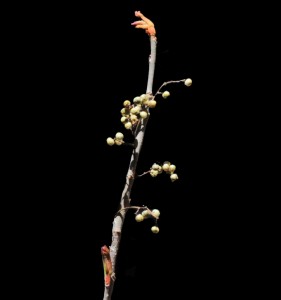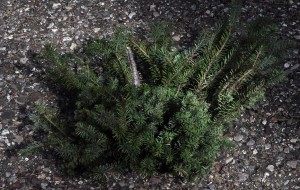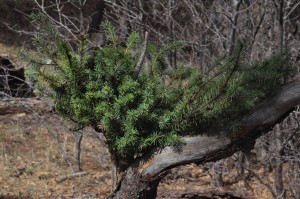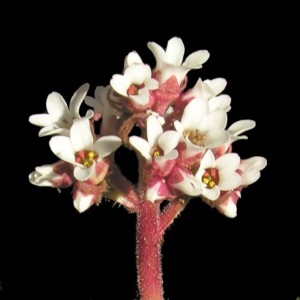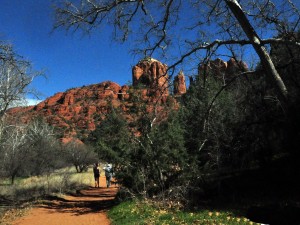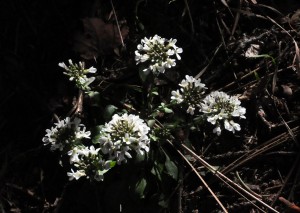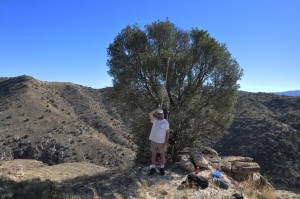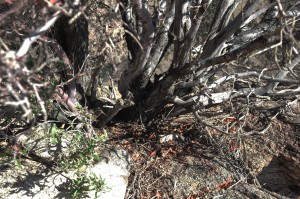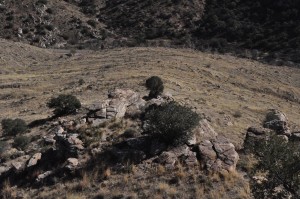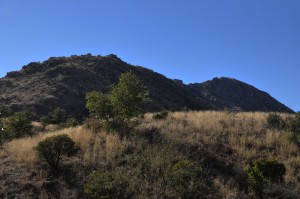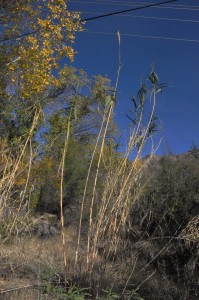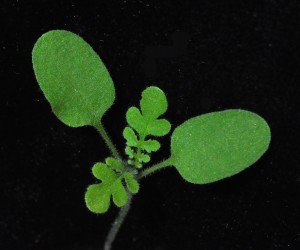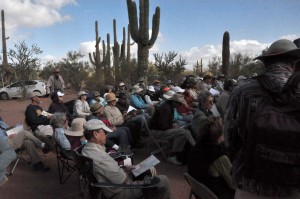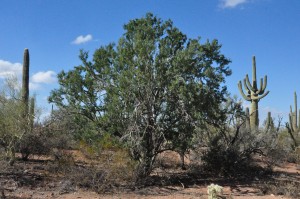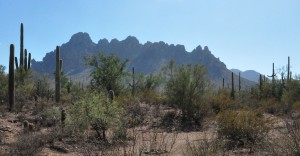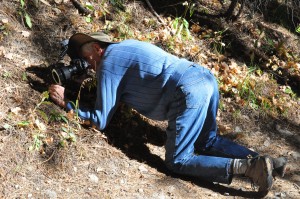The June issue of TUCSON LIFESTYLE HOME & GARDEN has an article called: “Blood is thicker than watercolor” by Megan Guthrie. It is a fine write up of the father/son duo, Frank and Owen Rose. This is one of the paintings featured.
“Thundering Falls” by Frank S Rose
And here is a link to the article (pp. 10, 11).
http://www.mydigitalpublication.com/publication/?i=210119&p=10#%7B%22page%22:10,%22issue_id%22:210119%7D
It has been a long time since we have had significant rain here in Southern Arizona, but there are many flowers in bloom in the mountains. There is a field of Lupine (Lupinus palmeri), the only Lupine species growing high in the mountain (4500 feet and above). The flowers are normally blue, but in one patch we saw three albinos.
An albino lupine
Not far away was a rare example of Green gentian, or Deer’s ears blooming (Swertia radiata). These plants have large leaves, (like deer’s ears) and year after year store energy underground until they finally send up a flowering stalk. These can be as tall as eight feet.

A portion of a five-foot tall stalk
An individual flower
Another large plant is Cow Parsnip (related to Hemlock), whose name Heracleum lanatum, means woolly Hercules, referring to the Greek muscle man. The leaves can be larger than dinner plates. The flowering heads have many groups of flowers, and each group has many flowers. These tend to be irregular, with larger petals at the edges of the inflorescence.
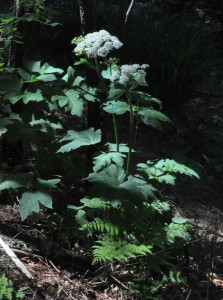
This plant is about five feet tall
Looking down at the flower head
Two flowers – note how the petal size varies
Ed and I were hiking along the Mint Spring trail. We came to the site of the old spring, now dried up. Looking up we saw a hillside that used to be covered with Ponderosa pine. As you can see in this photograph, they all burnt in the fire 11 years ago. On one slope I did not see any new trees. About a quarter of a mile north there were many young pines. But the most successful trees after a fire are the Quaking Aspen. These trees regenerate from the roots, and a patch that seems to contain hundreds of trees may be just have one root system underground with many trunks rising out of the ground as if they were separate trees.
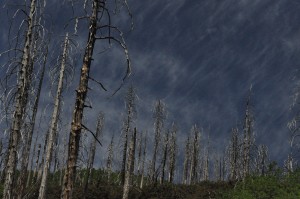
Looking up at the burnt forest. Note the interesting cloud patterns
A portion of the hillside with new pine trees
A portion of the hillside with new aspens
These days the temperature goes above 100 degrees in the valley, but the mountains are cool and beautiful. And the plant life on the mountain is slowly coming back after the fire of 2003, a fascinating process to watch.

